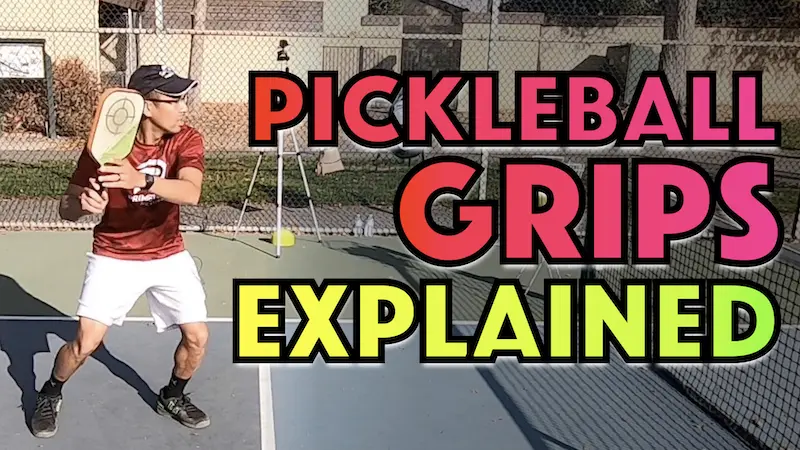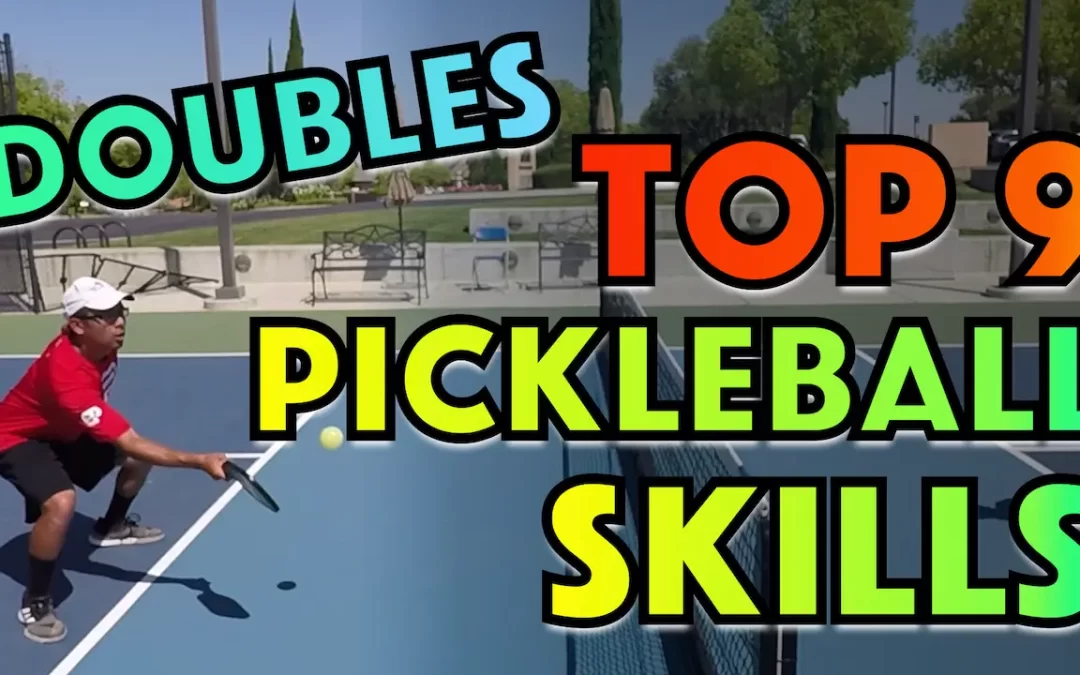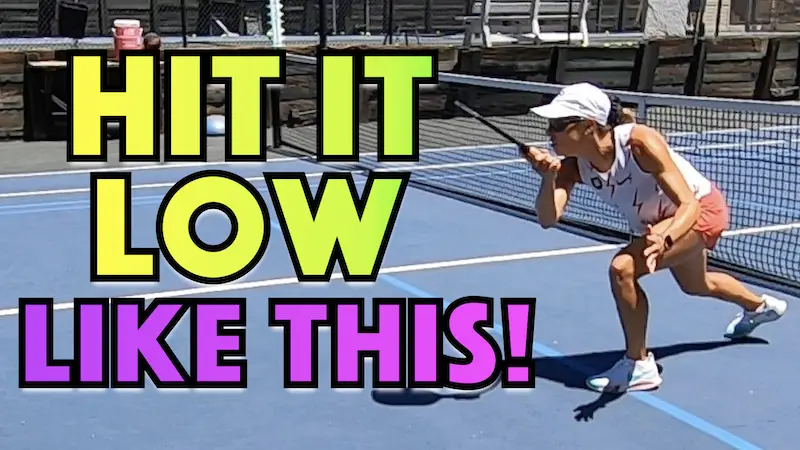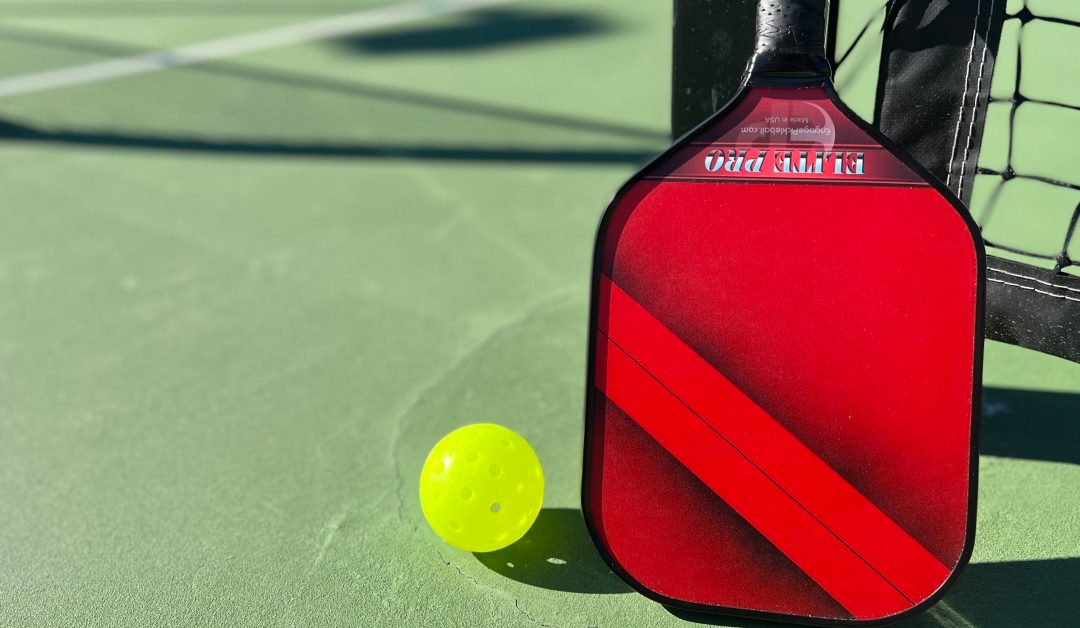Being a pickleball enthusiast, player, or coach, you must be familiar with the side-out or traditional game scoring system.
However, with other sports such as tennis, squash, ping-pong, badminton, and volleyball experiencing amazing results with the rally scoring system, it might be the future of pickleball.
You might want to learn about pickleball rally scoring before it gets officially implemented into the game.
There’s no guarantee that it will happen and it doesn’t seem like we’re headed there soon but it could happen especially as pickleball gets more popular since it does lend itself better to viewership as opposed to traditional pickleball scoring
This article has everything you need to know about rally scoring in pickleball.
Ready? Let’s go…
What Is A Rally In Pickleball?
In a rally scoring system in pickleball, a point would be scored by the team that wins the rally, regardless of if they are the serving team or the receiving team.
A rally in pickleball is the continuous back and forth that occurs after the service but before a fault. Two things can end a rally in pickleball.
These include:
1. Faults
There are many types of faults that can end a rally in pickleball. Here are some of the faults that if you commit, you will lose a rally:
- Hitting the pickleball ball into the net
- Non-volley zone faults
- Hitting the pickleball ball out of bounds
- Not adhering to the pickleball two-bounce rule
- When a pickleball ball in play strikes or hits a permanent object such as a the net post
2. Player’s Misconduct on Court
This includes any number of rule violations that are not considered faults. (ie. throwing your paddle at the other team)
What is Rally Scoring in Pickleball
Rally scoring in pickleball is a more conventional scoring system used in many sports where all points played are scored. This is in contrast to the current system where points can only be scored by the serving team.
In rally scoring, both the serving team and the returning team will score a point anytime they win a rally. In both scoring systems, you can only gain points, points are never deducted from your score.
It is also vital to note that rally-scoring pickleball games are normally played to a higher score (either 15 or 21).
This is because rally scoring games progress more quickly than traditional scored games.
Pros of Rally Scoring in Pickleball
- The main advantage of rally scoring in pickleball is that it makes pickleball games end much quicker. This is ideal for community or crowded courts because the games rotate out faster, and more players get a chance to play.
- The fast-paced rally-scoring games are more suitable for spectators. Not only would this increase ticket sales for stadium seating at pickleball facilities nationwide but this is a very important point as it relates to the growth of the sport’s broadcasting. Faster paced games that make things more exiting for spectators would make the sport more appealing for televised viewership. More viewership means more sponsorship opportunities and more money flowing into the sport
- With rally scoring, pickleball game duration is more predictable and consistent. There is a more steady scoring pace when each point is scored as opposed to traditional scoring which allows for many points to be played without score if nobody is able to convert their points on serve. For instance, if a traditional scoring pickleball game takes around 25 minutes to end, with rally scoring, this game duration is reduced by approximately 20%. This translates to about 4 minutes.
- The rally scoring system makes it easier for players to track and remember from which side of the court the next pickleball serve should take place.
Cons of Rally Scoring in Pickleball
- The majority of pickleball players claim that rally scoring is not how pickleball founders designed this game. They claim that rally scoring is a non-beneficial system, and it will need a change in the game strategies of how players approach the pickleball game. There is debate around the strength of this position.
- Playing the third shot in pickleball can be tricky and may start to feel more risky under a rally scoring system because a player can easily hit the ball into the net or sail it too high and end up in trouble. A team would risk losing a point instead of just losing the serve.
- It is claimed that the intermediate and beginner players suffer in rally-scoring pickleball games. This makes it hard for them to improve their pickleball gaming skills. For instance, a team or player has the possibility of losing a point at every rally. Less experienced pickleball players would find it hard to practice their shots as much during the whole game.
- Due to many controversies surrounding the rally scoring concept in pickleball, it has not been officially implemented in pickleball.
Differences Between Traditional Scoring and Rally Scoring
In traditional scoring, a player rotates court positions with their partner when they win a point during service.
For instance, you served from the right side of the court and your partner was on the left at the start of the point. Your team one that point. You would serve from the left and our partner would be on the right to start the next point. This is also the case with rally scoring.
In traditional scoring, a serving’s team score can only win a point if they win a rally.
If a non-serving team wins a rally, they can only force the second player to serve or force a side-out if all players have served. The non-serving team is not awarded a point if they win a rally in any case.
In rally scoring, the team that wins the rally is awarded the point, including the returning team.
Rally scoring does not have a second service. If your team loses the rally, your opponent is awarded the point and given their turn to service.
Rally scoring does not have a third number called out during score announcement. For instance, a rally-scoring score announcement is simple: your score is followed by your opponent’s score.
In traditional scoring, games are normally played to 11 points. In rally scoring, games are played to a higher score (usually 15 or 21). This is because a point in rally scoring is awarded at the end of every rally and the game tends to progress faster. To play for roughly the same amount of time as a traditional game it makes sense to play to a higher score.
How Do You Do Rally Scoring?
The first thing to do is decide on the team that will serve and receives first. You also need to decide the end of the court for each team. You can use any of these methods to decide:
- Pick a 1 or 2 and have the other team guess it
- Rock-paper scissors
- Coin flip
Each player on a team will have to decide the side of the pickleball court to start on (the right side or left side). The player on the designated to serve first will serve from the even side (right side) of the court. The score is 0-0.
If the serving team wins the point, the score is now 1-0. The server moves to the left and will serve from there while their partner now starts the point from the right. The returning team does not switch sides.
If the serving team had lost the opening point, the next score called would also be 1-0. Huh? This is because the other team is now the serving team and they call their score first. Neither team switches sides. The player on the left hand side of the now serving team would serve from that side.
Why from the left side and not the right? Because the score is 1-0 and you serve from the left side when your team’s score is odd and from the right when your team’s score is even.
Let’s continue wit this latest example and say the serving team wins the point, the score is now 2-0 and the player that just served, serves again, only this time from the right side.
There is no second server in rally scoring in pickleball which does tend to make things less confusing and the score dictating from which side you serve also helps quite a bit in minimizing confusion
As mentioned above, this game is won when the first team gets to 15 points or at times games can be played to 21 points. However, there must be a difference of 2 points. It is also important to note that points after the 20th point can only be scored on the serve.
Rally Scoring Important Points
- Each rally is worth a point
- There is no server 1 and server 2 in doubles- each side is only going to get 1 serve, but throughout the game each person will have the chance to serve
- Right side of court is even side and left side of court is the odd side
- The serving team score determines the side of the court of which the serve will be played (odd to odd side or even to even side)
- If the serving team or player scores then the same server will change to the other side of court and serve. This is the only condition under which a team will switch sides.
- The receiving team can score if they win the rally
- Games are typically played to 15 or 21, & are usually “win by 2 points”
Final Thoughts
Although the rally scoring system has not been officially implemented in pickleball, it is vital to know what it is and how it works.
For instance, with a rally scoring system, points are won by whichever team wins the rally; either the serving team or the receiving team. However, it has its pros and cons, as discussed in this article.
Understanding the rally scoring system and the nature of pickleball will get you ready to give it a shot on the courts and see how you like it. You’ll also be ready whenever this system is the format used in an event you attend or if it is permanently implemented with the growth of pickleball.
We hope these pickleball tips are useful to you. We hope to help you improve your game, drop shot, or dink shot, or whatever else you want to work on.
We have a great variety of articles on every pickleball topic under the sun to help you better understand and play the game.
Related Questions
What is the difference between side-out scoring and rally scoring?
In rally scoring, whichever team wins is awarded the point, while in side-out scoring, only the serving team is awarded a point if they win a rally.
Besides, in side-out scoring, games are normally played to 11 points, whereas in rally scoring, games are played to a higher score (usually 15 or 21).






